How to prune forsythia – expert tips for prolific flowering
Keep your forsythia flowering and healthy with our expert advice
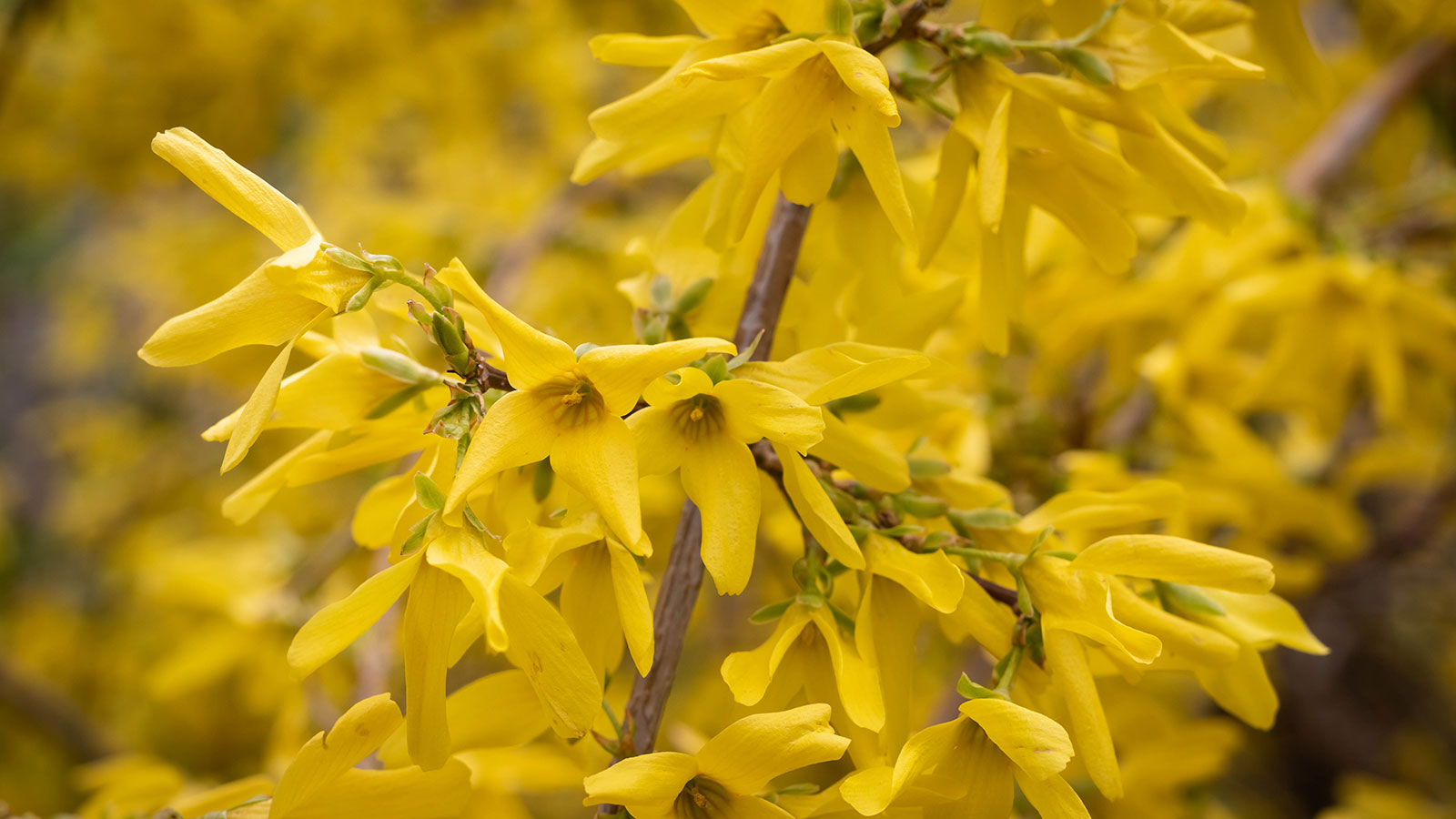

Making sure you prune your forsythia at the right time of year is vitally important because they are one of the most striking shrubs and if pruned wrongly, they will lose their spring blossom.
Unlike most deciduous trees and shrubs that are pruned between the fall and spring, once their leaves have dropped, this flowering shrub is cut back in mid-spring as soon as its blossom fades. So, for anyone asking when is it too late to prune forsythia, remember to prune as soon as flowering fades. If left until later in the year, or very early the next before its buds start to swell in spring, all you will do is remove the mature wood that bears the flowers.
We have a forsythia in our garden and the sight of its brilliant yellow flowers cheerfully unfurling gladdens the heart after a long grey winter. I don’t prune it every year because I quite like the wild beauty created by its longer branches, but I do give it a trim every other spring so it doesn’t encroach on neighbouring shrubs. Over the years I've learned what does and doesn't work, and have fine-tuned my approach to forysthia pruning.
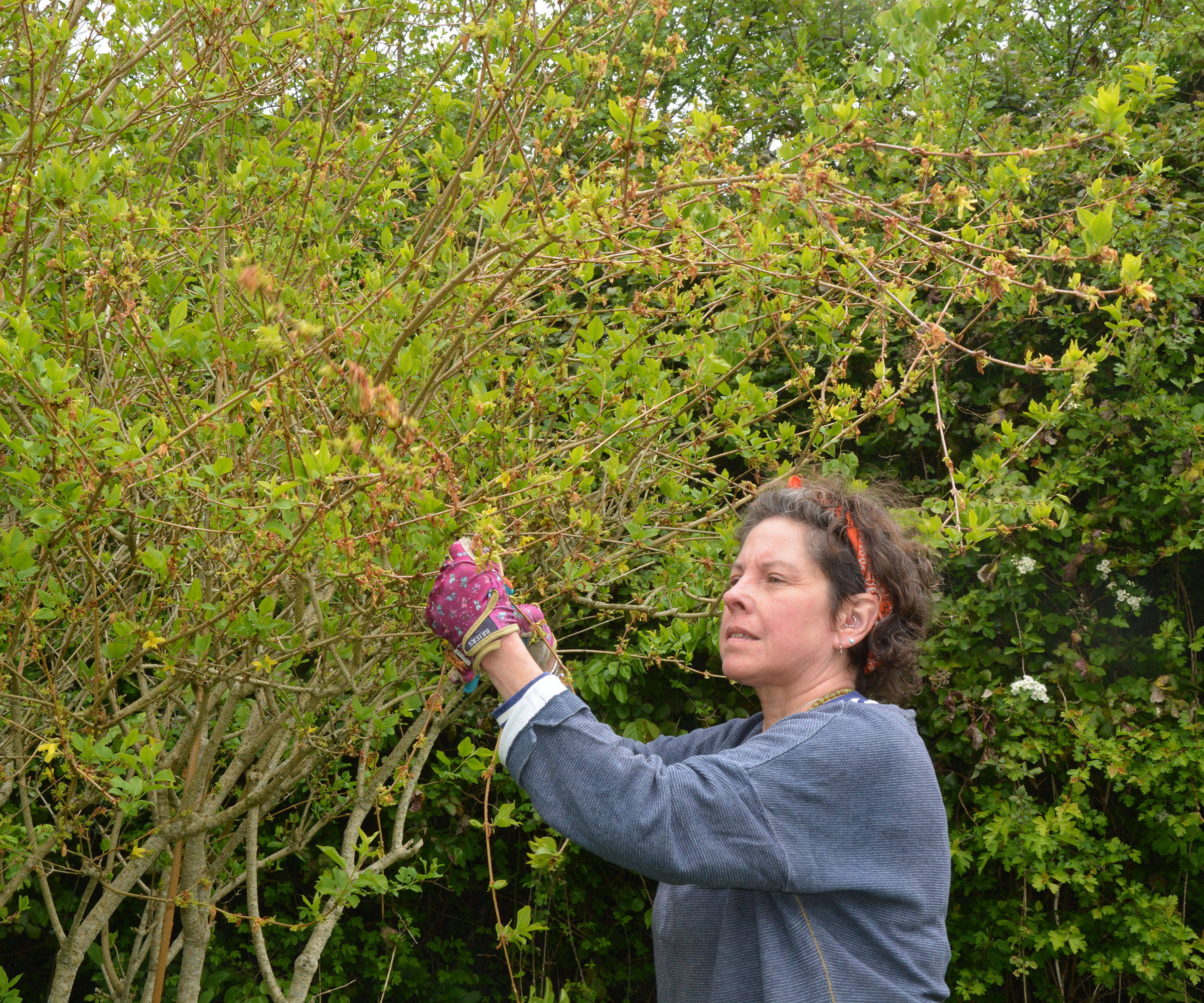
I prune my forsythia in late spring as soon as it has shed its blossom

As gardening editor of Amateur Gardening magazine, Ruth spends her days writing about and photographing the gardening jobs that her readers should be tackling each week. Horticulturally trained, she has qualifications from the Royal Horticultural Society. Pruning is one of the key tasks she offers advice on, showing readers how they can keep their trees and shrubs, such as forsythia, in shape.
When to prune forsythia
Forsythia is one of the earliest shrubs to break into flower, blooming from mid-February until April. It needs to be pruned as soon as its blossom fades.
Ideal as a shrub for the front of a house or in a backyard, this popular spring-flowering plant blooms on wood that has grown and matured the previous year. If you remove it in fall, at the end of the growing season, you will simply cut away the next year's flowering branches.
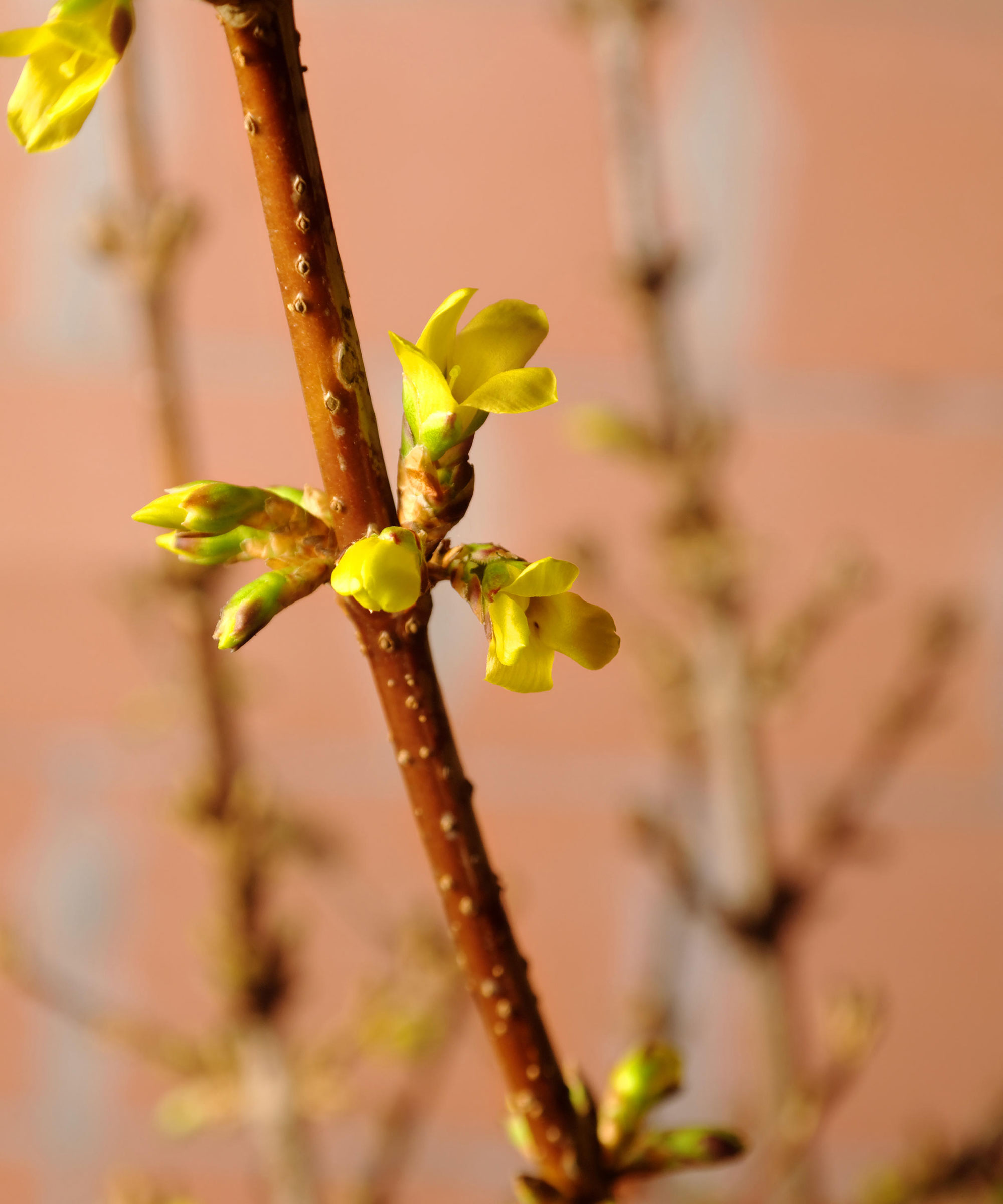
Forsythia flower buds form on wood grown the previous year
When to avoid pruning forsythia
To keep your shrub flowering well year after year, prune as soon as the blossom fades. Do not leave it until the usual dormant pruning season between fall and spring.
You should never cut back shrubs in freezing conditions as extreme cold can scorch the pruning wounds, leaving blackened tips and even killing off the entire branch in extreme circumstances.
This regime applies to all forms of forsythia, including dwarf varieties grown in pots as part of your container gardening ideas.
How to prune forsythia in 4 easy steps
Once you know the correct method for pruning forsythia, it's easy to keep this popular shrub growing well and in the best possible shape.
These are the four key stages I follow when pruning my own forsythia shrubs.
1. Remove larger branches
Larger varieties need an annual prune to keep them in shape and at a manageable size. Use long-handled loppers, such as these on Amazon, to remove one or two of the largest branches each year to open out the shrub so it doesn’t become congested.
This lets light and air into the center of the plant, helping keep it healthy and less prone to the fungal problems that can take root among congested branches.
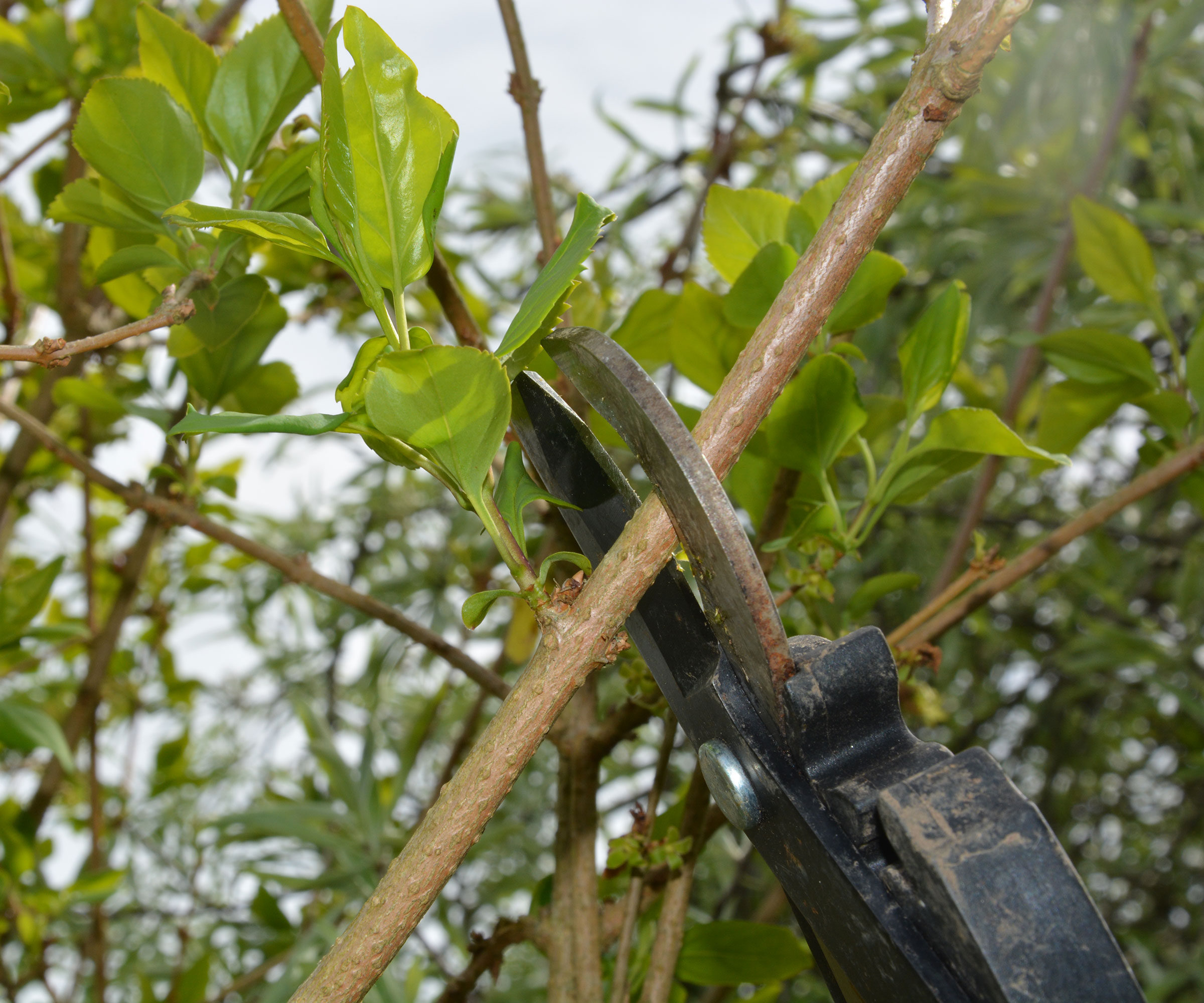
Use loppers to cut through thicker forsythia stems
2. Remove unproductive and weak wood
Once the older, thicker wood has been removed, look for smaller stems that appear weak, unproductive, dead or diseased.
Remove these with a pair of sharp clean pruners, such as these powerful ratchet pruners from Amazon, which make easy work of cutting through medium-thickness wood.
Cut away diseased and damaged wood until you reach healthy, green growth and then clean your garden tools afterwards to help prevent the spread of pests and disease. Always sharpen them after every use too.
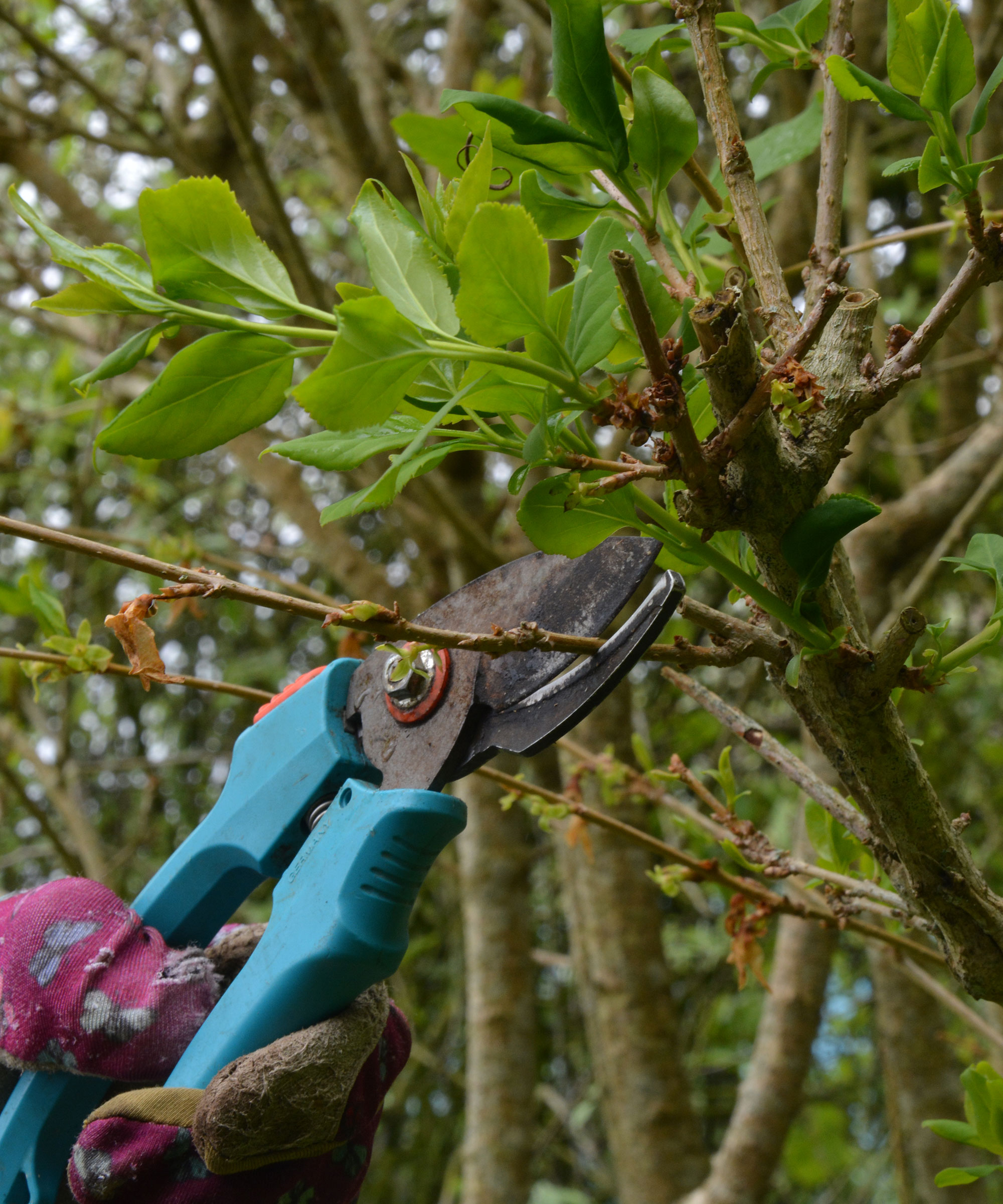
Remove weak and spindly stems as well as those that look dead or diseased
3. Cut back the flowered stems
Then take your pruners and shorten smaller stems by a half to help promote strong new growth through summer.
Cut back to a healthy pair of leaf buds that are facing outwards, as this is where the new shoots will emerge.
If you cut back to inward-facing buds the new growth will emerge towards the center of the shrub, making it look cluttered and untidy.

Reduce flowered stems to half their length to promote strong new growth
4. Remove unwanted base shoots
Finally remove any long, whippy shoots that are sprouting from the base of the shrub and crowding out the main stems.
They offer little in the way of flowering and make the overall appearance of your forsythia look cluttered and untidy.

Remove thin and straggly stems cluttering the base of your forsythia
Pruning compact varieties of forsythia
Compact varieties of forsythia and those suitable for growing in containers, such as 'Gold Tide', 'Show Off Starlet', 'Goldilocks' and 'Arnold's Dwarf' tend to be self-regulating and don’t need much pruning.
You can remove older wood from the base if the shrub is starting to look congested, and gently trim back longer shoots if necessary, but that is all they need.
Larger varieties of forsythia can be kept reduced in size by annual pruning.

'Gold Star' is a compact variety of forsythia
Forsythia pruning aftercare
Forsythias flower at the start of the growing season so after pruning, use a fertilizer to power them through the next few months.
You could either use a general purpose tree and shrub fertilizer such as this BioAdvanced 12 Month Tree and Shrub Protect and Feed from Amazon, or a slow-release organic fertilizer spike (also available on Amazon) that you insert into the soil.
Mulching with homemade compost or farmyard manure is a good idea too. Spread this over the root area but keep it away from the trunk as it can dampen and weaken the bark and provide an entry point for pests and disease.
Shrubs growing in containers can quickly use up all the nutrients in their compost so topdress them in spring by removing the top few inches of compost and replacing it with fresh. Add tree or shrub fertilizer and water well, and this should feed them through the rest of the year. Make sure their compost is kept damp but not sodden, and raise the planter on pot feet or a wheeled caddy (both available from Amazon) so excess water can escape.
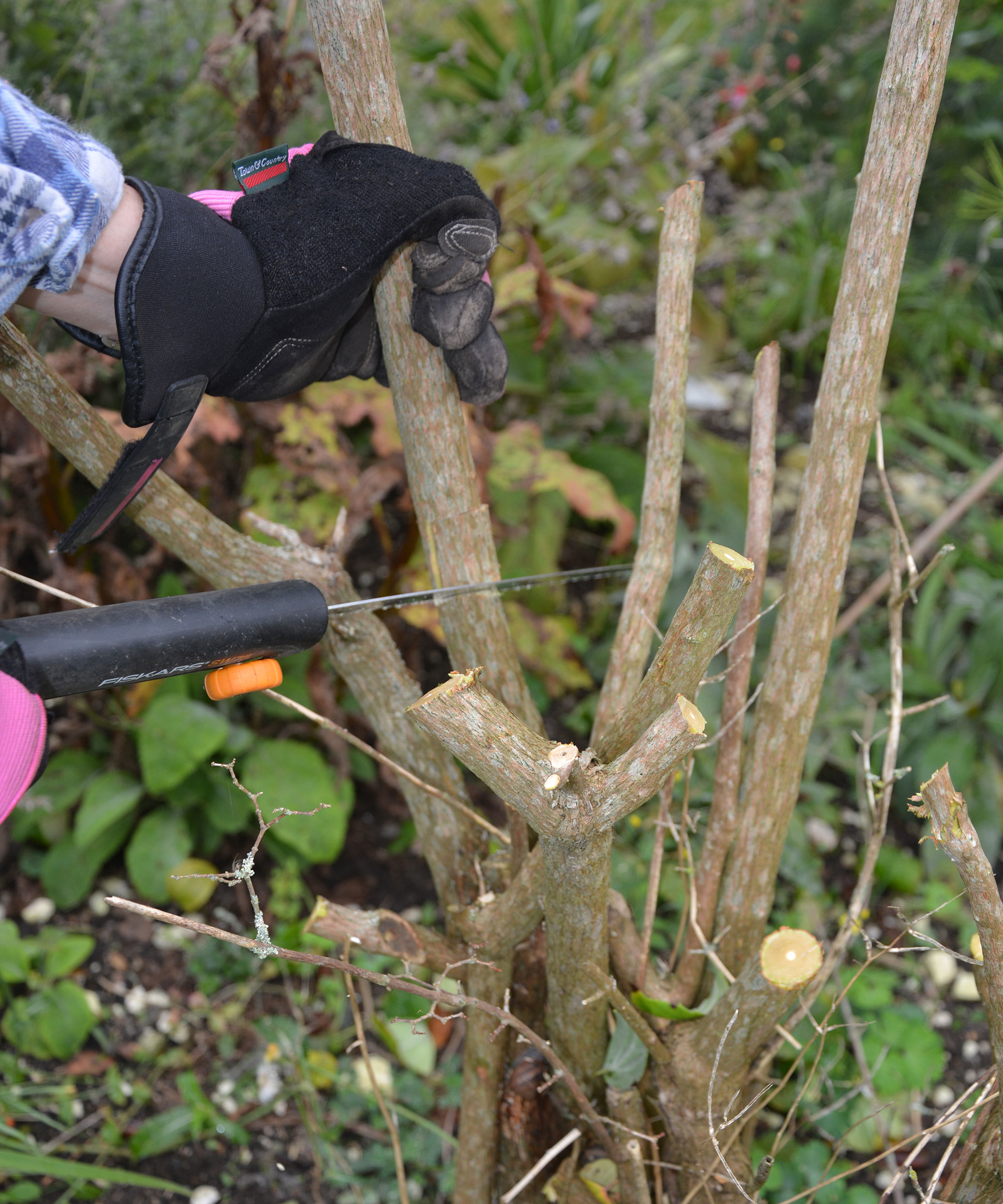
Hard pruning takes the shrub almost down to ground level and is a drastic form of renovation
FAQs
Can I hard prune my forsythia?
A very overgrown forsythia shrub can be hard pruned, and this is the one time when they are pruned in the fall, because if you cut them right back in spring they will bleed sap profusely which weakens them considerably.
Hard pruning is a drastic way of cutting back very overgrown shrubs almost to ground level. It will generate lots of new growth but it will mean the shrub won’t flower for at least a year.
Therefore the best way to tackle a very overgrown and neglected forsythia is to remove a few of the oldest stems using a bow saw or folding pruning saw (both from Amazon) with a comfortable grip over a three or four-year period, leaving younger growth intact to continue flowering.
That way, in time, the whole shrub will be regenerated over a few years without completely losing its shape and flowers.
Sign up to the Homes & Gardens newsletter
Design expertise in your inbox – from inspiring decorating ideas and beautiful celebrity homes to practical gardening advice and shopping round-ups.

Ruth is a Contributing Editor for Homes & Gardens, and formerly Gardening Editor of Amateur Gardening magazine. She is horticulturally trained, with a qualification from the Royal Horticultural Society. Her work for Amateur Gardening, the world's oldest weekly gardening publication, involved matching gardening tasks with each season, covering everything from sowing and planting, to pruning, taking cuttings, dealing with pests and diseases and keeping houseplants healthy. She is an expert in ornamental plants and edible crops, and everything she writes about and photographs is in her own garden, that has been a work in progress since her family moved there in 2012.
-
 'The world will not end' – 5 cleaning habits to quit for a happier, easier life, and what to do instead
'The world will not end' – 5 cleaning habits to quit for a happier, easier life, and what to do insteadGet your home sparkling, minus the stress
By Ciéra Cree Published
-
 Martha Stewart's pale pistachio entryway is not just for Easter, it's for life – designers swear by this unique take on my favorite color for year-round calm
Martha Stewart's pale pistachio entryway is not just for Easter, it's for life – designers swear by this unique take on my favorite color for year-round calmThe trend for pistachio green shows no signs of waning
By Jennifer Ebert Published